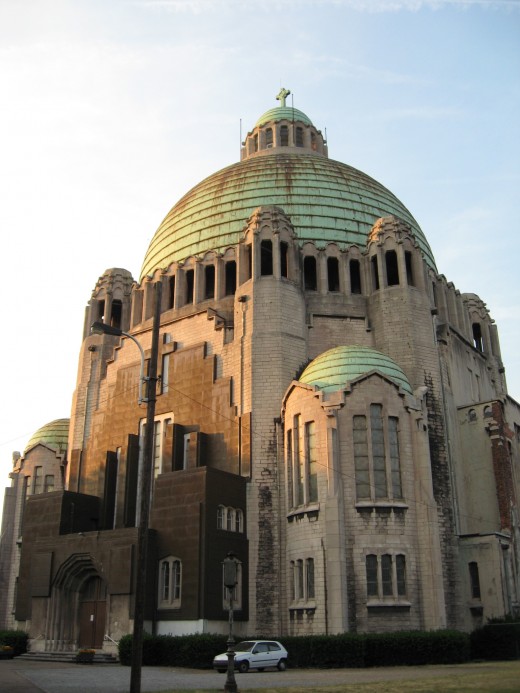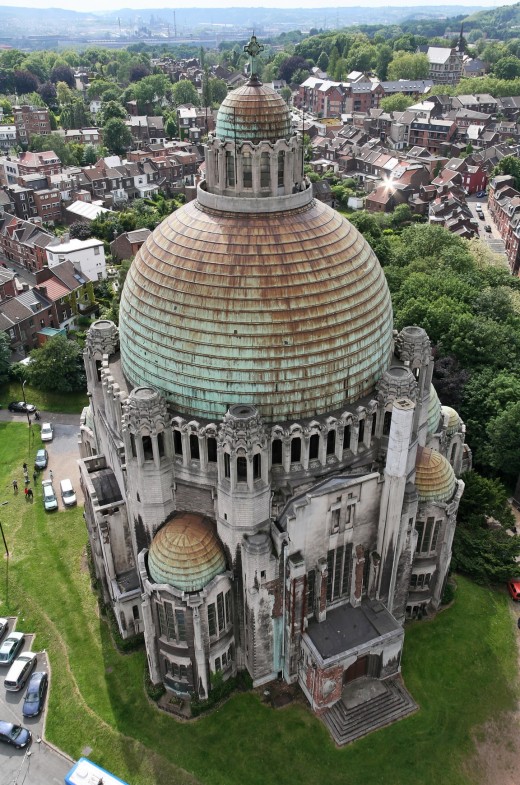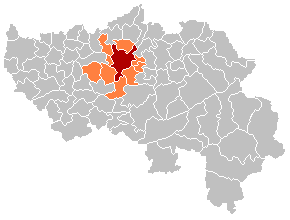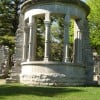Visiting the Basilica of Cointe, Liège, Belgium: monumentality and names




Neo-Byzantine solidity
When I lived in Liège, Belgium, this monumental church building at the brow of a hill in the suburb of Cointe, was known as the Basilica of the Sacred Heart (French: Basilique du Sacré-Cœur ). At least, this is a name which was widely applied to it.
Now it transpires that, in fact, it never was a basilica after all. Oh, well.
Be this as it may, it also transpires that it is now no longer a church building after all. In recent years it was formally announced that the Basilica-that-never-was of Cointe was officially not a church building any more. Not long afterwards, politicians of the Walloon region (French: Région wallonne ) formally announced that this fine, imposing structure had become a Walloon heritage monument. One may wonder, in fact, whether long before now the building's heritage value would have been quite obvious. The thought occurs also concerning whether these two announcements were in some way linked, or whether, obliquely, one announcement would not have occurred without the other. In other words, did some sort of a deal emerge, whereby secularist politicians, unwilling to pay the upkeep of an overtly religious building, extracted the promise that the edifice would no longer be officially a church building? In the nature of politics, there are doubtless officials who might strongly deny that such a deal actually took place. But for those who are familiar with the visceral hostility of many Walloon politicians towards public recognition of faith, one is left wondering how accurate any such denials really would be.
Anyway, this is a fine building, whether or not it is a church building, or whether it was ever a basilica. Can people prove it was once a basilica? can they prove it wasn't? When did it popularly cease to be a basilica? a church building? can people prove that Walloon politicians have been faithful to their secularist faith? can it be proved that they haven't? These subtleties sometimes relate to the recesses of the minds of officials, who have their own reasons for espousing the choice nuances of their vocabulary.
The church building was commenced in 1928 and completed in 1936, under the supervision of architect Joseph Smolderen. The style worked by Architect Smolderen is neo-Byzantine, and is distinguished by the presence of several domes, the largest of which considerably enhances the building's status as a landmark.
The building forms part of the Interallied Memorial (French: Mémorial interallié ), which is also partly comprised by a separate tower, secular in character. This was erected to commemorate the sacrifices of Belgium and its Allies in World War One.
Also worth seeing
In Liège , other visitor attractions include considerable, other examples of ecclesiastical architecture; the Perron steps; the former Prince-Bishops' Palace; the Fragnée Bridge; the Zénobe Gramme Monument; the Bueren Mountain.
...
How to get there: Brussels Airlines flies from New York (JFK) to Brussels Airport, where car hire is available (distance from Brussels Airport to Liège : 94 kilometres). The Belgian railroad company SNCB maintains a service from Brussels to Liège . Some facilities may be withdrawn, without notice. Please check with the airline or your travel agent for up to date information. You are advised to refer to appropriate consular sources for any special border crossing arrangements which may apply to citizens of certain nationalities.
MJFenn is an independent travel writer based in Ontario, Canada.
Other of my hubpages may also be of interest
- Visiting Reinhardstein Castle, eastern Belgium: Medieval memories
- Visiting Bouillon, Belgium: memories of Godefroid, styled King of Jerusalem, and his castle
- Visiting Mons, Belgium, and its amazing City Hall: municipal affairs in Medieval Gothic
- Visiting Tournai, Belgium and its amazing cathedral: Medieval monumentality run amok?
- Visiting the Parliament Building, Brussels, Belgium: the Palace of the Nation









